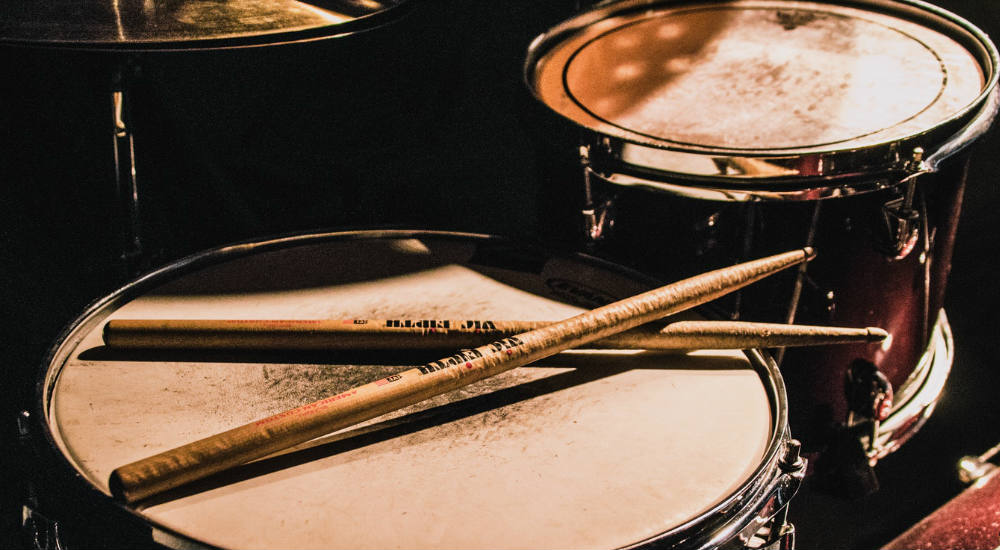First, the know-how. Regardless of the framework, or in this case – rudiment, this is an application exercise for accents. Basically, I think of accents as a way of adding some dynamic variation and creating phrases. If you were saying a sentence to someone and had no variation in your voice, you’ll basically sound like a) a robot, b) the voice command in your car and c) plain boring. Adding accents gives life to the phrase, creates interest and something for your ear to lock onto.
Back to the paradiddle. Since we’re using the same rhythm for each of these examples – four groups of 16th notes – orchestrating the accents around the drums gives our fills some substance. Furthermore, adding accents gives that dynamic lift we need. Each of these examples, however, starts life on the snare. The key here – and no matter how boring it might seem, you must persist – is to maintain the two-level dynamic range. Accents should be solid, full strokes – rim shots, if you like. Think about what dynamic level you’d want when playing live. Practice this way. The non-accented notes should be ghosted and really soft. Like, really soft – think barely a centimetre off the drum. Why the massive difference? Contrast. Variation. Think about the voice command. You’re better than this.
Now, the fun begins. When you are confident that your strokes are even – both accents and non-accents – you can move the accents onto the toms. The general rule, as some of you would know, is the right hand accent moves onto the floor tom and the left hand accent onto the rack tom. All non-accented notes must remain ghosted on the snare drum. It’s really hard at first to keep these strokes soft, but you must stick to it. Once your brain remembers the idea, it’ll become habit. Don’t practice the wrong way or your brain will remember that instead.
Figure A is a simple single paradiddle as it appears in the international rudiment list – a single accent at the beginning of each semiquaver set. From here, we start to add other accents, but only really on the single strokes and not the doubles, for ease of motion. Practice each one steadily and with great care for dynamics on the snare and the toms as written. Listen to the phrases being created and let your ears lock into this, more so than the actual sticking itself. When the time comes, you’ll be playing live and possibly at a fast tempo where you don’t have time to be to thinking RLRR LRLL. You just need to feel it. Hear the accent phrase and let the hands ‘fill in the gaps’. The examples will feel a whole lot more musical this way. Try each example in context, too, by playing a groove (three times, say) and then the fill you’re practicing. This is preparing you for a live situation.

The third and final example of each figure, whilst suitable as a fill, is more groove-based. You can see the paradiddle orchestrated between the hi-hats (right hand) and the snare drum (left hand). You’ll also notice that where a right hand accent occurs, I’ve added a bass drum to thicken the sound and create contrast to the left hand accents that remain on the snare drum. We’re trying to create less predictable grooves that are funky and dynamic. The accents provide this for us. Again, I must stress, the rules of accenting still apply – big, solid accents with soft ghost notes.
At this point it’s worth noting that this is merely an example of a truly massive concept. There are so many different options. From using a different paradiddle, combinations of paradiddles, moving the accents on the cymbals with bass drums, combining the given applications in one bar etc., there are literally stacks of options and directions you could take, but it’s worth experimenting with because these types of phrases will give you some more scope for musical, tasteful ideas to incorporate into grooves and drum solos. Remember to always be musical though, and use where appropriate. Have fun!







